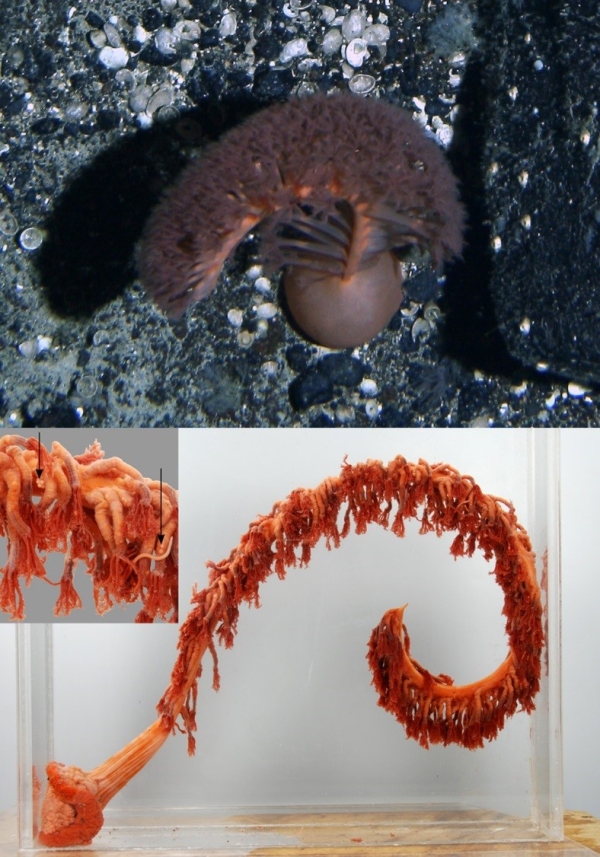Sea pens are generally found in deep sea soft sediment habitats (rarely are they encountered by divers, take a look at this video: 1). They are very distinct relatives of the corals and anemones, in that they have a structure at the bottom of their rachis (stem) called a peduncle, which is a large fleshy growth that they use to safely anchor themselves into the soft substrate. Generally regarded as sessile (i.e. they stay in one spot all their lives), sea pens can however use peristaltic pressure to deflate or inflate their sausage-shaped peduncles when they need to move, or in some species to retract themselves below the substrate.
However, Anthoptilum gowlettholmesae is a sea pen with a difference! It is one of only four known species of sea pens that have modified their peduncle to anchor themselves onto hard substrates, e.g. rocks. For this reason they are known as rock pens and their peduncles are more disc shaped and we think that they work similar to a plunger.
Anthoptilum gowlettholmesae was described by our friends Gary Williams (sea pen expert) and Phil Alderslade (octocoral expert), both recent visitors to the NIWA Invertebrate Collection, from South Tasmanian seamounts from 730-1800 m depth (2). Now we know they also occur around the southern New Zealand region as far south as the Southern Ocean. Gary and Phil propose that rock pens can detach from hard substrates and reattach to new substrates later.
The species is dedicated to Dr. Karen Gowlett-Holmes, Collection Manager at CSIRO in Tasmania and avid underwater photographer. In the words of the authors: This species is named for Karen Gowlett-Holmes, who had been endeavouring to collect specimens of it for several years.
References:
1) http://www.teara.govt.nz/en/video/4726/sea-pens 2) http://www.mapress.com/zootaxa/2011/f/z03001p048f.pdf

